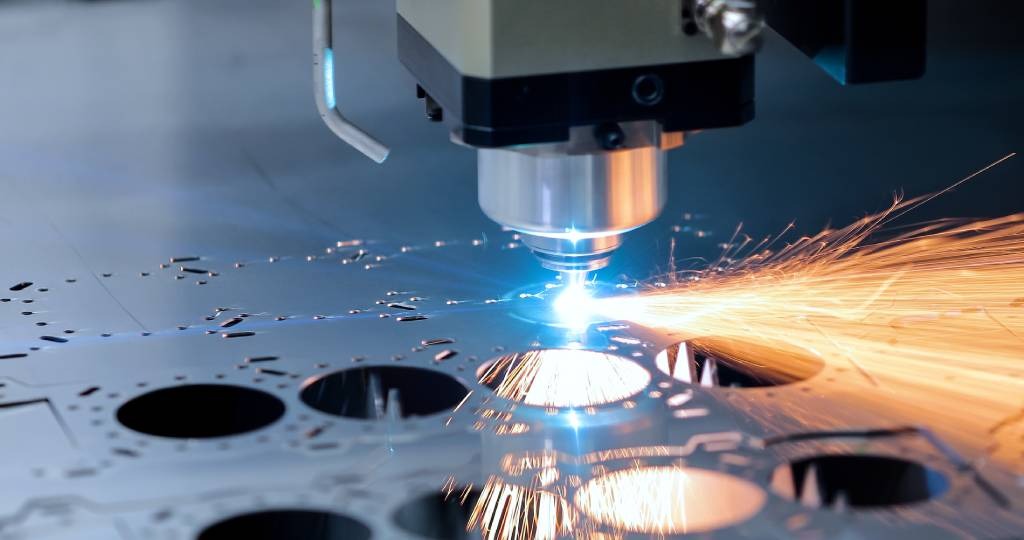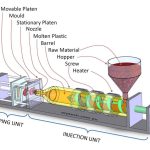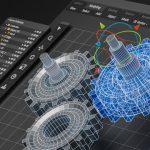Introduction 🌱
In modern manufacturing, precision and automation are essential for creating complex components with speed and accuracy. Computer Numerical Control (CNC) machines have revolutionized industries by automating the production process, ensuring consistent quality, and reducing human error. From aerospace and automotive parts to intricate jewelry and medical devices, CNC machines play a crucial role. But how do these machines work, and what makes them so efficient? Let’s explore the working principles of CNC machines, from design to final execution.
What Is a CNC Machine? 🤔
A CNC (Computer Numerical Control) machine is an automated device that uses pre-programmed computer software to control the movement of tools and machinery. Unlike manual machines, CNC machines follow precise instructions encoded in a digital file, allowing them to cut, shape, drill, and mill materials with exceptional accuracy.
Key components of a CNC machine include:
- Controller 💻: The computer system that interprets and executes the digital design file.
- Actuators ⚙️: Motors that move the machine’s components along specific axes.
- Spindle 🌀: The rotating tool that performs cutting, drilling, or milling operations.
- Tool Changer 🔁: An automatic system that switches tools as needed.
- Worktable 🗜️: The platform that holds the material being processed.
How CNC Machines Work: Step-by-Step Process ⚙️
The CNC machining process involves several key steps, from designing the part to executing the final cuts:
1. Designing the CAD Model 💡
The process begins with creating a digital design using CAD (Computer-Aided Design) software, such as AutoCAD, SolidWorks, or Fusion 360. This design includes precise dimensions, shapes, and features of the final product.
2. Converting to CAM Instructions 🧩
The CAD file is then imported into CAM (Computer-Aided Manufacturing) software, which translates the design into G-code—a programming language that CNC machines understand. G-code includes instructions for tool paths, speeds, feed rates, and cutting depths.
3. Setting Up the CNC Machine 🏗️
Before execution, the machine operator:
- Loads the raw material (metal, plastic, wood, etc.) onto the worktable.
- Selects the appropriate cutting tools and secures them in the tool changer.
- Configures the machine’s zero point, which serves as the reference for all movements.
4. Executing the Program 💻⚙️
Once the setup is complete, the machine reads the G-code and begins the cutting process. Motors move the spindle and tools along predefined paths to shape the material with high precision. The machine continuously monitors its position and adjusts movements in real-time to maintain accuracy.
5. Finishing and Inspection 🧹🔍
After machining, the finished part is removed from the worktable. Depending on the application, the part may undergo additional processes like sanding, polishing, or coating. Quality control inspectors check the dimensions, surface finish, and structural integrity to ensure the part meets specifications.
Types of CNC Machines 🗂️
CNC technology is applied to various types of machines, each designed for specific tasks:
- CNC Milling Machines 🌀: Cut and shape materials using rotating tools that move along multiple axes.
- CNC Lathes 🔄: Rotate the material while cutting tools shape it, ideal for cylindrical parts.
- CNC Routers 🪚: Cut and engrave wood, plastic, and soft metals, often used in woodworking and signage.
- CNC Plasma Cutters 🔥: Use a high-temperature plasma arc to cut through metal.
- CNC Laser Cutters 💡: Use a laser beam to cut or engrave materials with extreme precision.
- CNC EDM (Electrical Discharge Machines) ⚡: Use electrical sparks to shape hard metals without physical contact.
- CNC 3D Printers 🖨️: Build objects layer by layer using additive manufacturing techniques.
Key Concepts in CNC Machining 💡
1. Axes of Movement 🔀
CNC machines move along multiple axes, allowing for complex, three-dimensional cutting:
- 3-Axis (X, Y, Z) 🟢: Basic movement in three directions—left-right, front-back, and up-down.
- 4-Axis (X, Y, Z, A) 🔁: Adds rotation around the X-axis, enabling more complex shapes.
- 5-Axis (X, Y, Z, A, B) 🌀: Allows rotation around two axes, providing maximum flexibility for intricate designs.
2. G-Code and M-Code 💻
CNC machines follow two main types of programming codes:
- G-Code: Controls tool movements, speeds, and positions (e.g., G01 for linear movement, G02 for clockwise arcs).
- M-Code: Controls machine functions like tool changes, coolant flow, and spindle rotation (e.g., M03 to start the spindle, M06 to change tools).
3. Precision and Tolerances 🎯
CNC machines are capable of maintaining extremely tight tolerances, often within a few microns. This precision is crucial for industries like aerospace and medical devices, where even small deviations can impact performance.
Advantages of CNC Machining ✅
CNC machines offer numerous benefits compared to manual machining methods:
- High Precision and Consistency 🎯: Produce complex parts with exact dimensions and minimal variation.
- Speed and Efficiency ⚡: Automated processes reduce production time and increase throughput.
- Automation and Labor Savings 🤖: Minimize human intervention, reducing labor costs and human error.
- Versatility 🔀: Handle a wide range of materials, including metals, plastics, wood, and composites.
- Scalability 📈: Easily scale production from one-off prototypes to large production runs.
- Complex Geometry 🧩: Create intricate shapes that would be difficult or impossible with manual tools.
Challenges and Limitations ⚠️
Despite their advantages, CNC machines also have some limitations:
- High Initial Costs 💰: Purchasing CNC machines and software can be expensive.
- Programming Complexity 💻: Writing and optimizing G-code requires skilled operators.
- Material Waste 🗑️: Removing material through cutting generates waste, which can increase costs.
- Maintenance Requirements 🧹: Regular maintenance is essential to prevent wear and ensure precision.
Real-World Applications of CNC Machines 🌍
- Aerospace ✈️: Producing lightweight, high-strength components with precise tolerances.
- Automotive 🚗: Manufacturing engine parts, gears, and custom components.
- Medical Devices 🏥: Creating surgical instruments, implants, and prosthetics.
- Electronics 💻: Fabricating circuit boards, connectors, and casings.
- Jewelry and Art 🎨: Crafting intricate designs and detailed engravings.
- Construction and Architecture 🏗️: Producing custom metal and wood components.
Quality Control and Maintenance 🕵️
Ensuring the accuracy and reliability of CNC machines requires regular maintenance and quality control:
- Calibration 📏: Periodically calibrate the machine to maintain precise movements and dimensions.
- Tool Inspection 🔍: Check cutting tools for wear and replace them as needed.
- Lubrication 🧴: Keep moving parts properly lubricated to prevent friction and wear.
- Error Monitoring ⚠️: Use sensors and software to detect and correct errors during machining.
CNC Machining vs. 3D Printing 🆚
While both CNC machining and 3D printing are used for manufacturing, they have distinct differences:
| CNC Machining | 3D Printing |
|---|---|
| Subtractive process (removes material) | Additive process (builds material layer by layer) |
| Suitable for metals, plastics, and wood | Primarily used for plastics and resins |
| High precision and strength | Lightweight and customizable designs |
| Higher material waste | Minimal material waste |
| Ideal for large production runs | Best for prototypes and low-volume production |
The Future of CNC Machining 🚀
CNC technology is constantly evolving, with advancements that are improving efficiency, accuracy, and automation:
- Smart Manufacturing and Industry 4.0 🤖: Integrating CNC machines with IoT sensors and AI to optimize performance and predict maintenance needs.
- Advanced Materials 🧪: Expanding the range of materials, including composites and advanced alloys.
- Hybrid Manufacturing 🔗: Combining CNC machining with additive manufacturing for greater design flexibility.
- Sustainability and Energy Efficiency ♻️: Reducing material waste and energy consumption through smarter machining processes.
As CNC machines become more advanced and accessible, they will continue to play a crucial role in industries worldwide, enabling faster production, greater innovation, and higher-quality products.
Conclusion 🌟
CNC machines have revolutionized manufacturing by automating the production of complex components with unparalleled precision and efficiency. From digital design to final execution, these machines follow a seamless process that ensures consistent quality and scalability. With applications ranging from aerospace and automotive to electronics and healthcare, CNC technology is essential for modern industry. As advancements in automation, AI, and materials continue to evolve, CNC machines will play an even greater role in shaping the future of manufacturing.


